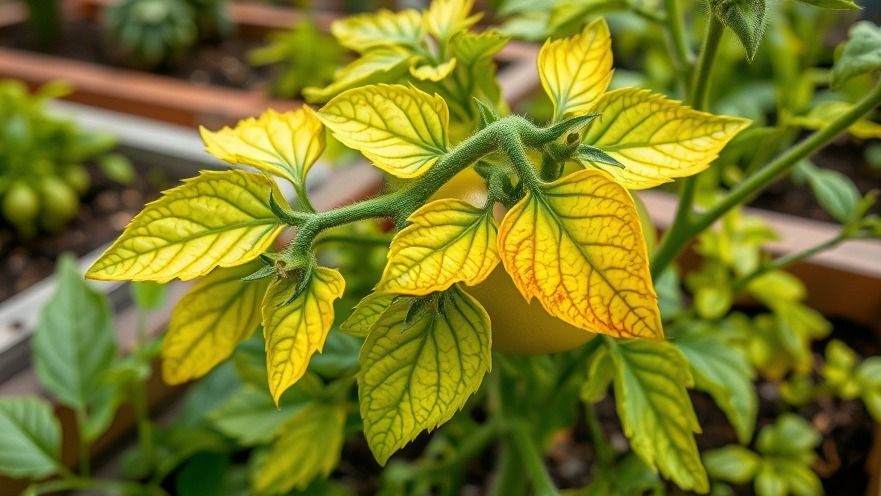
Signs Your Tomato Plant Needs Immediate Attention
Tomato plants are a staple of home gardening, cherished for their delicious fruit and vibrant foliage. However, even the most seasoned growers encounter challenges that can leave their beloved plants in distress. Recognizing the signs of a struggling tomato plant is crucial for ensuring a lush harvest. Let’s delve into the five common indicators that your tomato plant is desperately seeking help—and how you can revive it.
1. Wilting Leaves: A Cry for Moisture
When temperatures soar, wilting leaves are often the first cry for help. Tomato plants experience wilting due to insufficient water during hot weather, as well as overwatering that leads to soggy soil. The key solution lies in providing a consistent watering schedule tailored to your soil type. Regular water without overdoing it, combined with a layer of compost, can work wonders. Compost not only nourishes the soil but also helps retain moisture, decreasing the frequency of watering needed.
2. Stunted Growth: Nutrient Deficiencies at Play
If your tomato plants fail to grow, it may be due to a lack of essential nutrients. Stunted growth can result from imbalanced soil pH or nutrient depletion. Conducting a soil test can unveil what your plants truly need. Applying a balanced fertilizer, along with regular feedings during the growing season, can help rejuvenate your plants. You’d be surprised how a little soil management can lead to skyrocketing growth.
3. Yellowing Leaves: The Sign of Stress
Yellow leaves can signify various issues, from nutrient deficiencies to pests and diseases. If lower leaves are yellowing, they may simply be aging and should be trimmed. However, if this symptom affects the entire plant, check for pest damage or overwatering. Effective pest control methods, including companion planting and organic sprays, can enhance your plants’ health while promoting a thriving garden ecosystem.
4. Blossom Drop: Frustrating Even the Best Gardeners
Experiencing blossom drop? This problem arises when tomato plants face stress—be it from extreme heat, drought, or poor pollination. To combat this, ensure your plants receive consistent moisture and consider hand-pollinating blossoms in a humid environment. By providing support through careful watering and managing the environment, you can encourage blossoms to set fruit!
5. Cracking Skin: Check for Water Fluctuations
Lastly, cracked tomatoes are often a result of inconsistent watering. When your tomato plant receives a surge of water after a dry spell, the rapid absorption causes the fruit to expand faster than the skin can adjust. To prevent this, maintain a steady watering schedule and use mulch to regulate moisture levels in the soil. A layer of mulch not only hydrates but can enhance the overall aesthetic of your garden! Just imagine picturesque rows of juicy, unblemished tomatoes.
Conclusion: Act Quickly for a Prolific Harvest
As summer continues, the joy of growing tomatoes includes staying vigilant in addressing their needs. Recognizing the signs and offering timely interventions not only saves your plants but rewards you with a bountiful harvest. Don’t wait for the problems to escalate—act promptly to ensure your tomato plants thrive all season! If you're looking to enhance your gardening experience, consider the benefits of container gardening or even explore garden planning tips tailored to your outdoor space.
 Add Row
Add Row  Add
Add 




Write A Comment